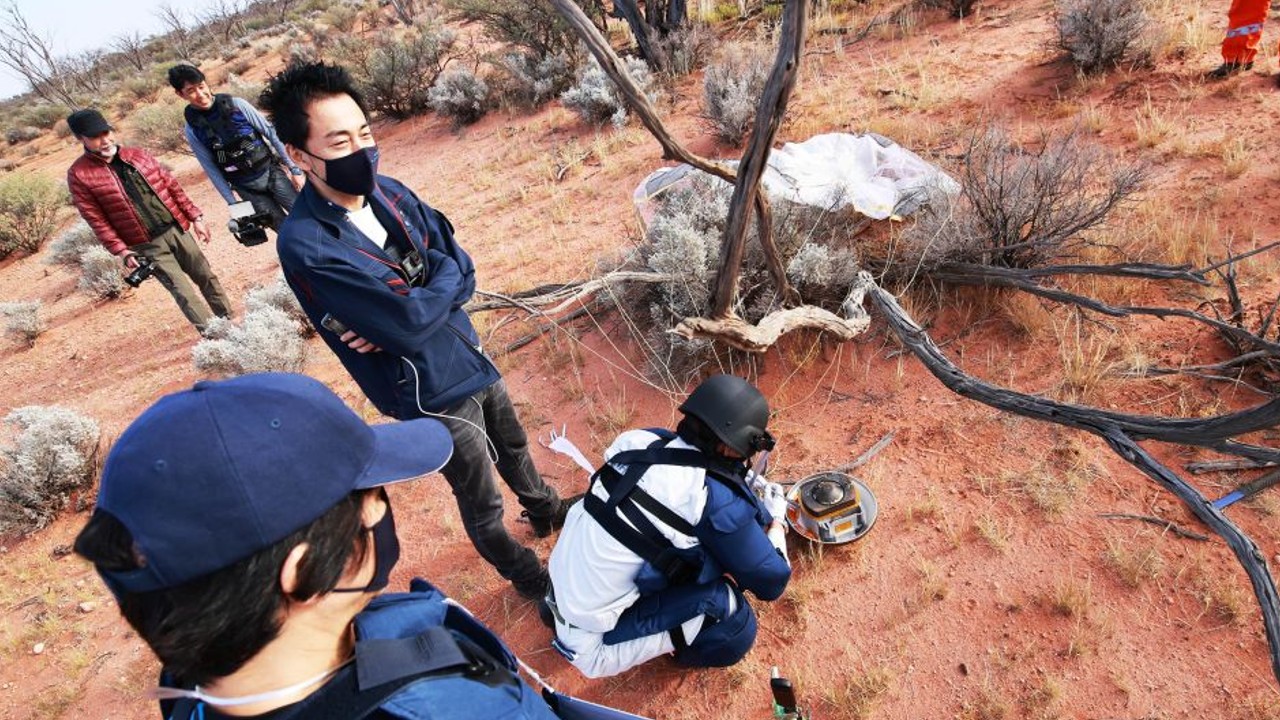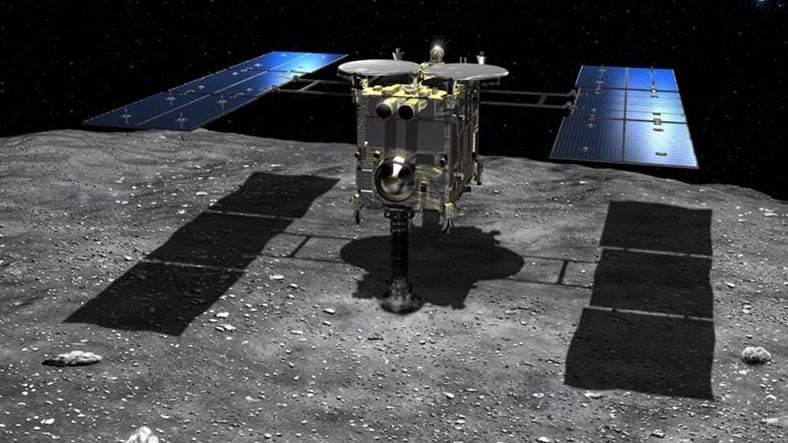Hayabusa2 The probe was a probe tasked with collecting underground materials unaffected by cosmic rays or solar radiation and transporting them to Earth unharmed. Twice in 2019 and 2020 to the asteroid Ryugu Hayabusa2, which descended and collected underground samples from an asteroid for the first time, landed on Earth in late 2020.
The probe commissioned by the Japanese Space Research Agency (JAXA) to the history of the solar system It was expected to provide valuable examples of: According to the analysis of samples taken from the probe, it has been studied so far in a laboratory on Earth. of the most primitive materials some appeared.
Ryugu could be one of the building blocks of the earth

The Hayabusa2 spacecraft, which reached the asteroid Ryugu in 2018, dropped 5.4 grams from the asteroid. two small examples of regolith had received. These samples later landed on Earth in a parachute-equipped capsule in December 2020. The samples were distributed among scientific groups, including a team led by Tetsuya Yokoyama, a professor at the Tokyo Institute of Technology. According to the team’s new results, the constituent of the samples obtained so far is a gas cloud that condenses to form the sun and planets. to the solar nebula turned out to be the part with the most similarity. So the found component is 4.5 billion years ago It consists of the substances that make up the solar system.
Hisayoshi Yurimoto, a professor at Hokkaido University in Japan, said in a statement. one of the building blocks of the world and because it is so old of the materials that make up the planets declared to have taken place. The findings also support previous research stating that Ryugu is made from primitive materials. It was not known exactly how old Ryugu was until now.
Ryugu may have formed 5 million years after the formation of the solar system

Research has shown that Ryugu has a temperature of between 27 and 47 degrees Celsius, since about the beginning of the solar system. to form after 5 million years indicates it may have started. The researchers state that with a diameter of 900 meters, Ryugu has a small size, researchers think that the asteroid may have broken off from a larger asteroid.
The research team states that no meteorite or asteroid material examined so far on Earth has appeared in such a primitive and degraded form, and said that this is only the beginning of the examples brought by Hayabusa2, and that the next step will be to determine the abundance of different elements and their isotopes in the early solar system when planets were forming.















